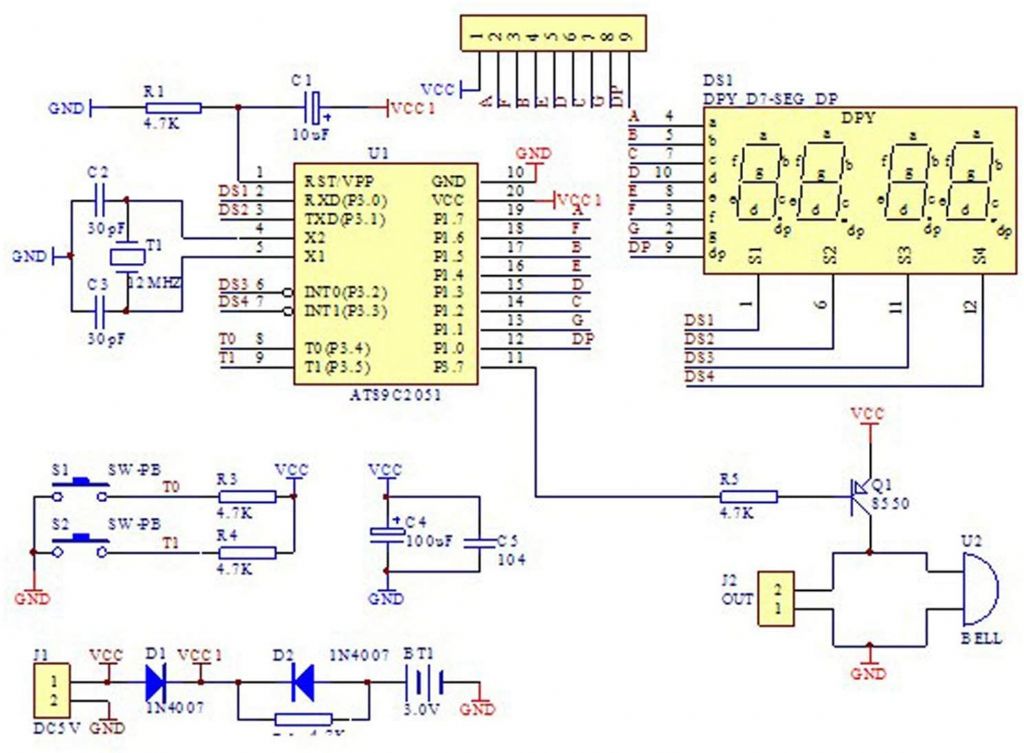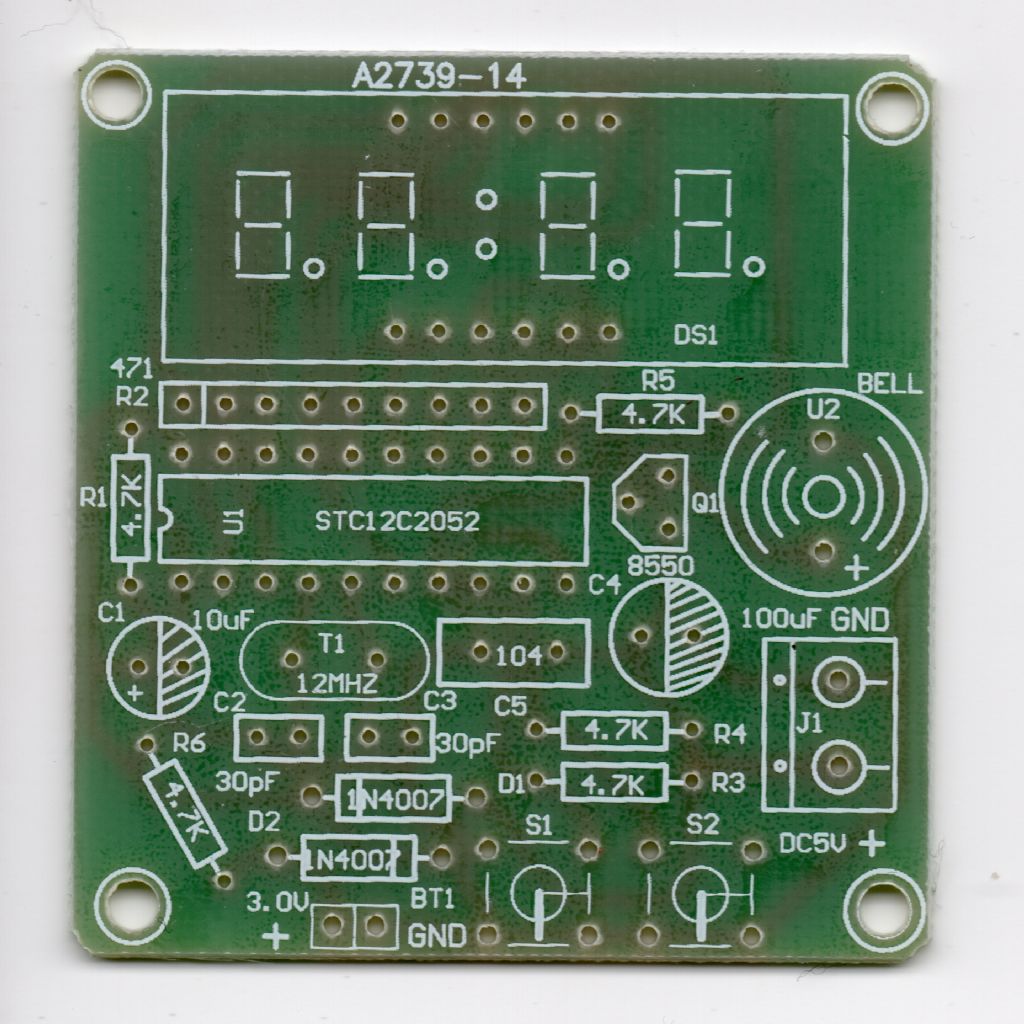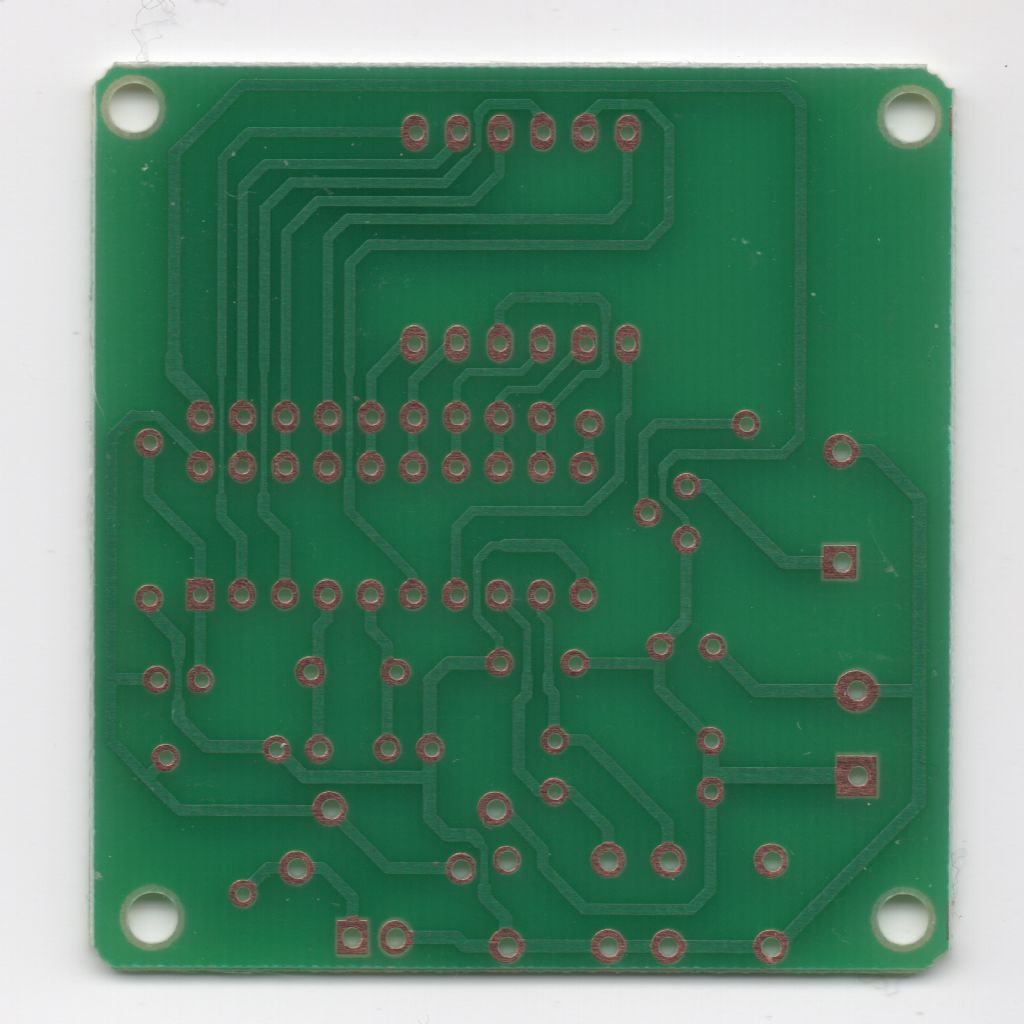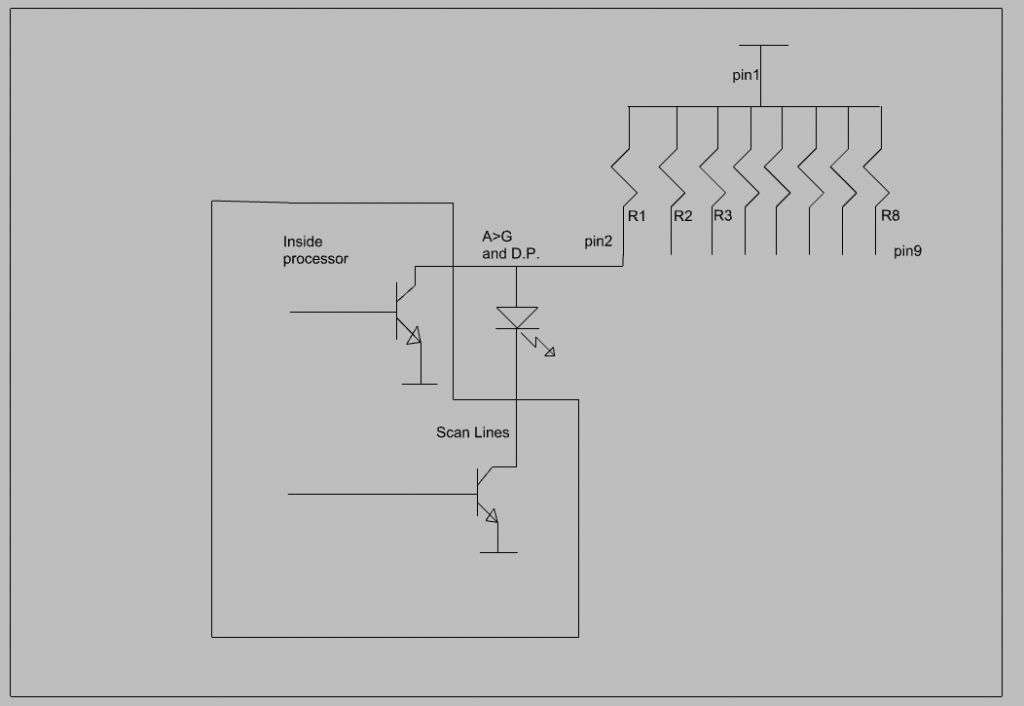Thanks, Joe … I have an update :
- I rigged some better lighting on the stereo microscope, and have confirmed that R2 is inserted the wrong way round
- and I have dug out my ‘Timer Counter’ and checked the oscillator, which is running at 12000.3KHz
That's Good!
- There is still nothing on the display
That's Bad..
Despite your previous reassurance; is there any chance that the mis-orientation of R2 could be completely blanking the display ? … Could it be a ‘feature’ of the [totally undocumented program] ?
Please don’t waste too much of your time on a silly little project that cost less than £1.50 though !!
MichaelG.
Doubt that R2 orientation is seen by the processor at all..
here is a crude representation of whats going on –
The processor drives open collector ( probably FETs, so open drain, but irrelevant here) transistor as shown. eight drive the A-G and D.P. segments of the displays.
4 drive the scan lines DS1-4
having looked more carefully at your schematic there is a qick test to see if the segment glow at all..will explain shortly.
So, assume VCC at pin 1 of the resistor network, ie, assume the network is inserted correctly..
Then current will flow down R1 (diagram below) through the 7 segment LED, IF the scan line transistor is on.
So, to turn on Segment 1 of display 1 ( say), as below, the A-G line transistor ( top one) must be OFF, and the scan line transistor ( bottom one) must be ON.
to turn a segment OFF, the processor will drive the top transistor ON, which pulls the the LED/R2 network pin to GND, so no current available to flow through the LED, so no glow.
Now, if you connected VCC to pin 9 instead of pin 1, then current still flows down R1, through the segment LED and the bottom transistor, BUT, it gets there via R8. Since R1 thru R8 are equal values ( 470ohm), half the current now will flow through the led, so half as bright. No other effects at all..
Now the test –
Remove the processor from the socket, power the board, and with a wire jumper, short one of the DS lines to GND. That should light up ALL the segment of one of the digits. Repeat for the others. You van see how that works – current can flow through all the segments since the top transistor is OFF ( missing), so shorting the DS1-4 line to GND provides the current flow path.
If NO segments glow, the display is faulty, or as I have had before, its a common anode instead of common cathode device…

 Michael Gilligan.
Michael Gilligan.







